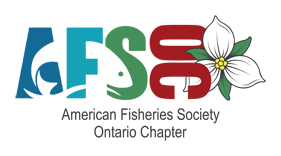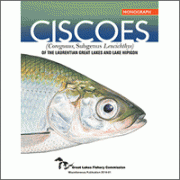A Monograph on Ciscoes of the Laurentian Great Lakes and Lake Nipigon
Following a nearly four-year team effort at analysis and writing, the Great Lakes Fishery Commission announces publication of Ciscoes (Coregonus, subgenus Leucichthys) of the Great Lakes and Lake Nipigon. This report, styled as a monograph, is available in PDF now and will soon be printed for field use.
Ciscoes historically were the dominant consumers of zooplankton throughout the Great Lakes. Comprising eight main forms, this complex provided critical links in food webs between invertebrates and top predators like Lake Trout and Walleye. Ciscoes also supported wide-ranging commercial fisheries. One form of cisco inhabited upper waters and was predominant. The other seven forms all inhabited deep water and were marketed as chubs.
The new monograph represents an update of a study by Walter Koelz, published in 1929. He was the first to systematically describe the forms and document their life history. His field studies, conducted aboard commercial fishing boats, lasted from 1917 to 1924, and encompassed 14,000 specimens—a colossal undertaking. Many of his specimens are archived at the University of Michigan Museum of Zoology, where he once worked.
The diversity of ciscoes documented by Koelz did not persist long after the completion of his studies. In fact, the two largest forms in Lake Michigan were approaching extirpation even while he collected. The cause was intensive fishing with gillnets that selectively removed the largest forms, allowing the smaller forms to proliferate. This situation worsened when the sea lamprey invaded the Great Lakes and preferentially preyed on the largest forms, compounding the problem.
Read more at the GLFC eFORUM newsletter page.



